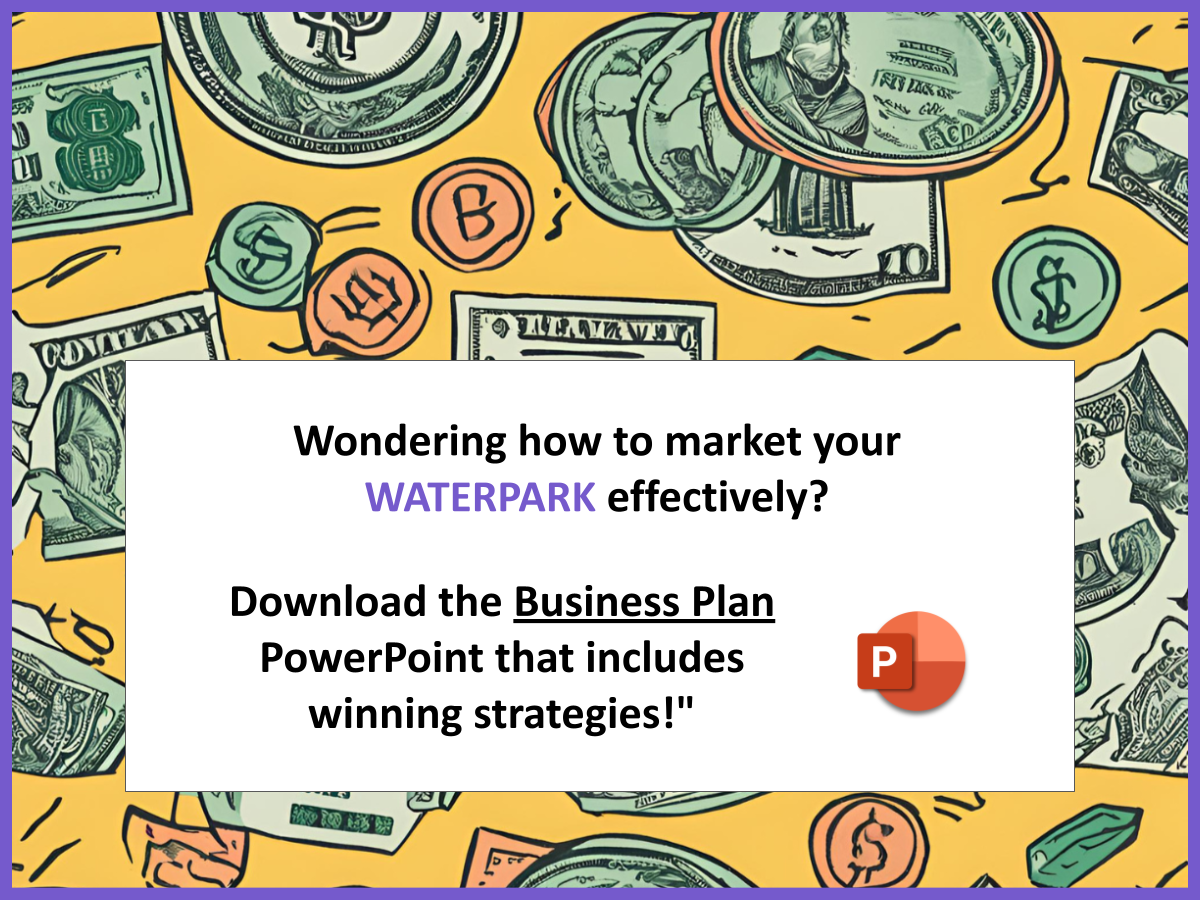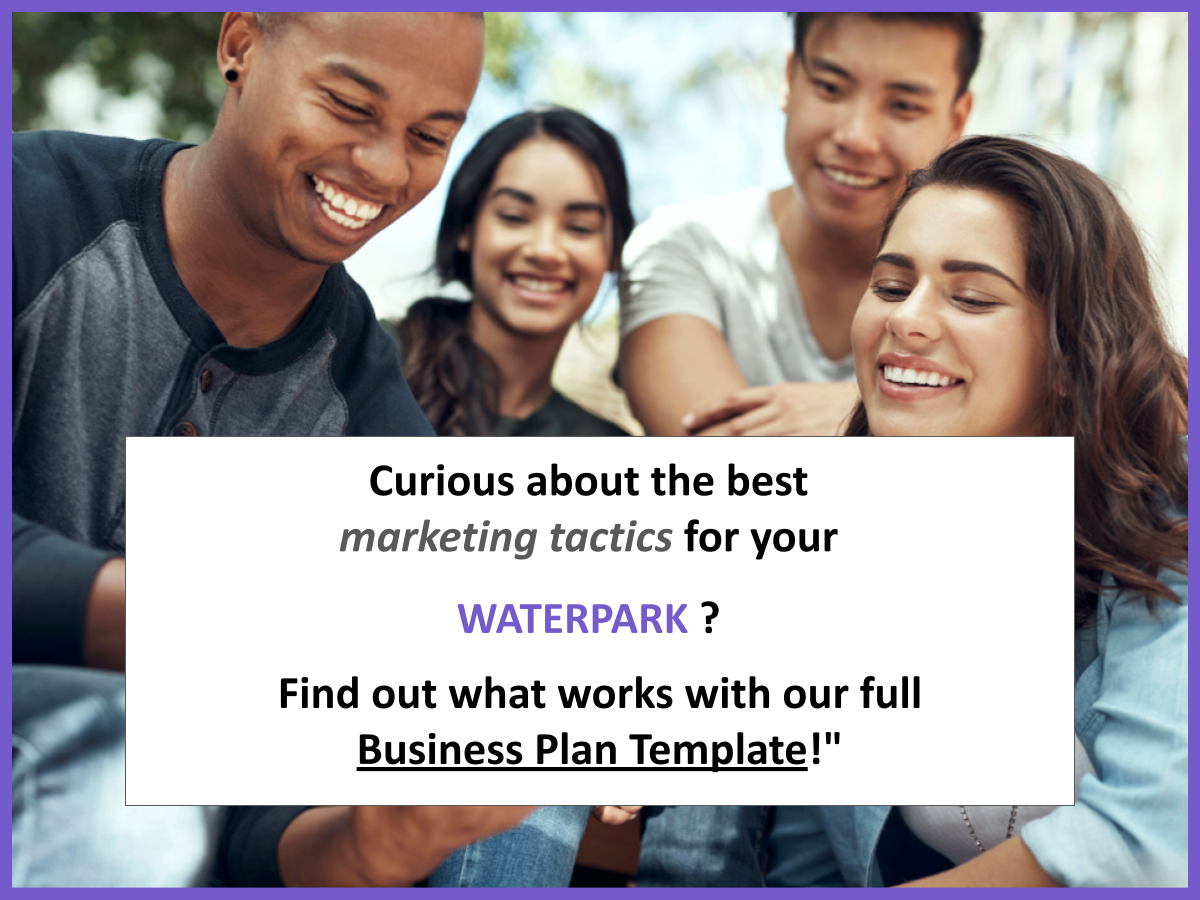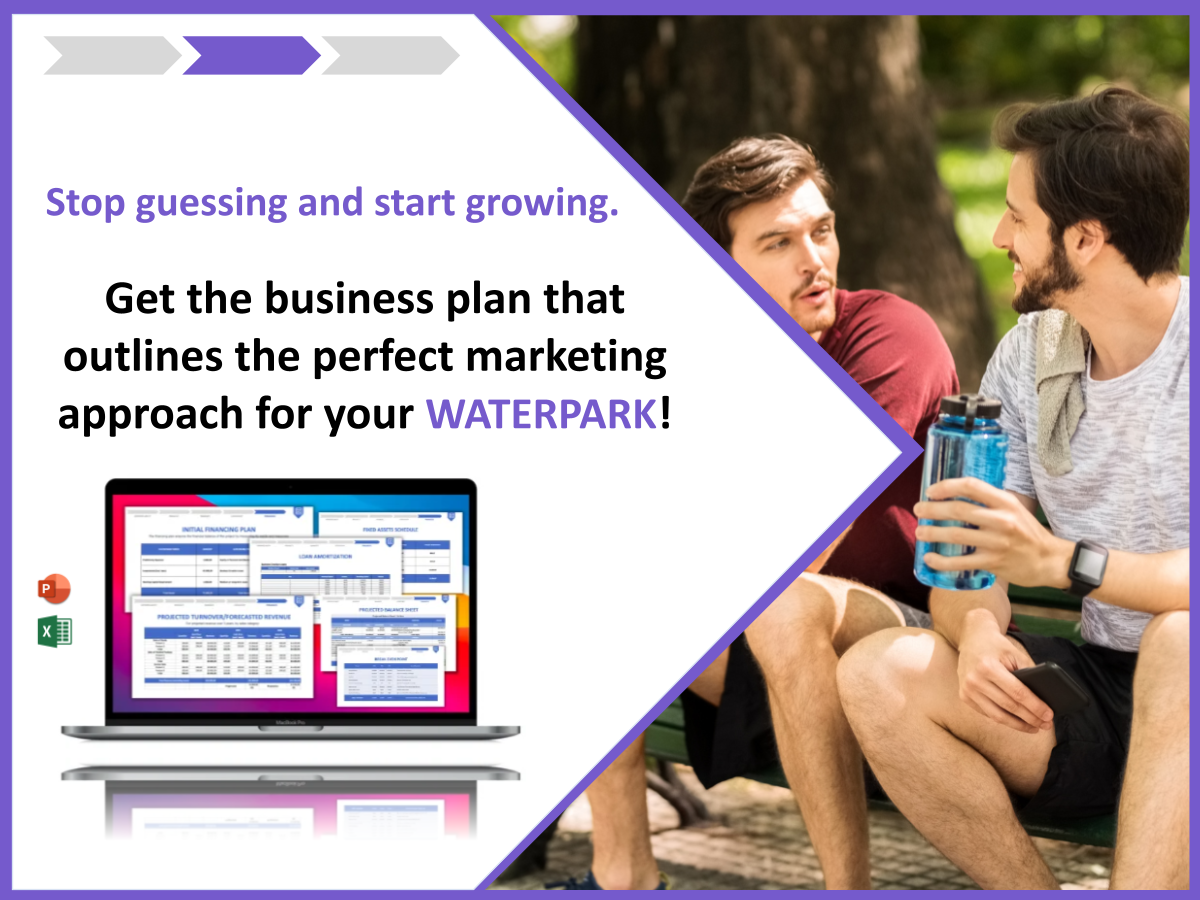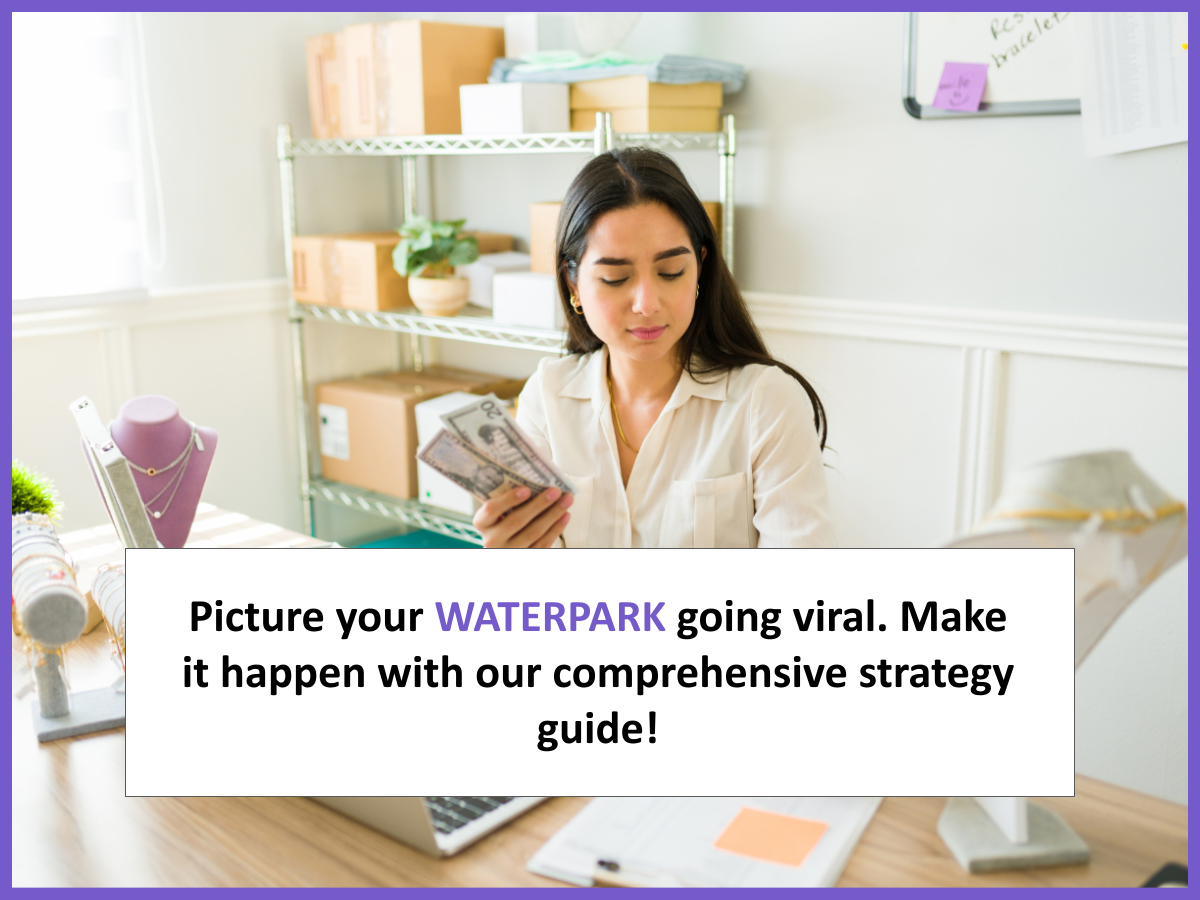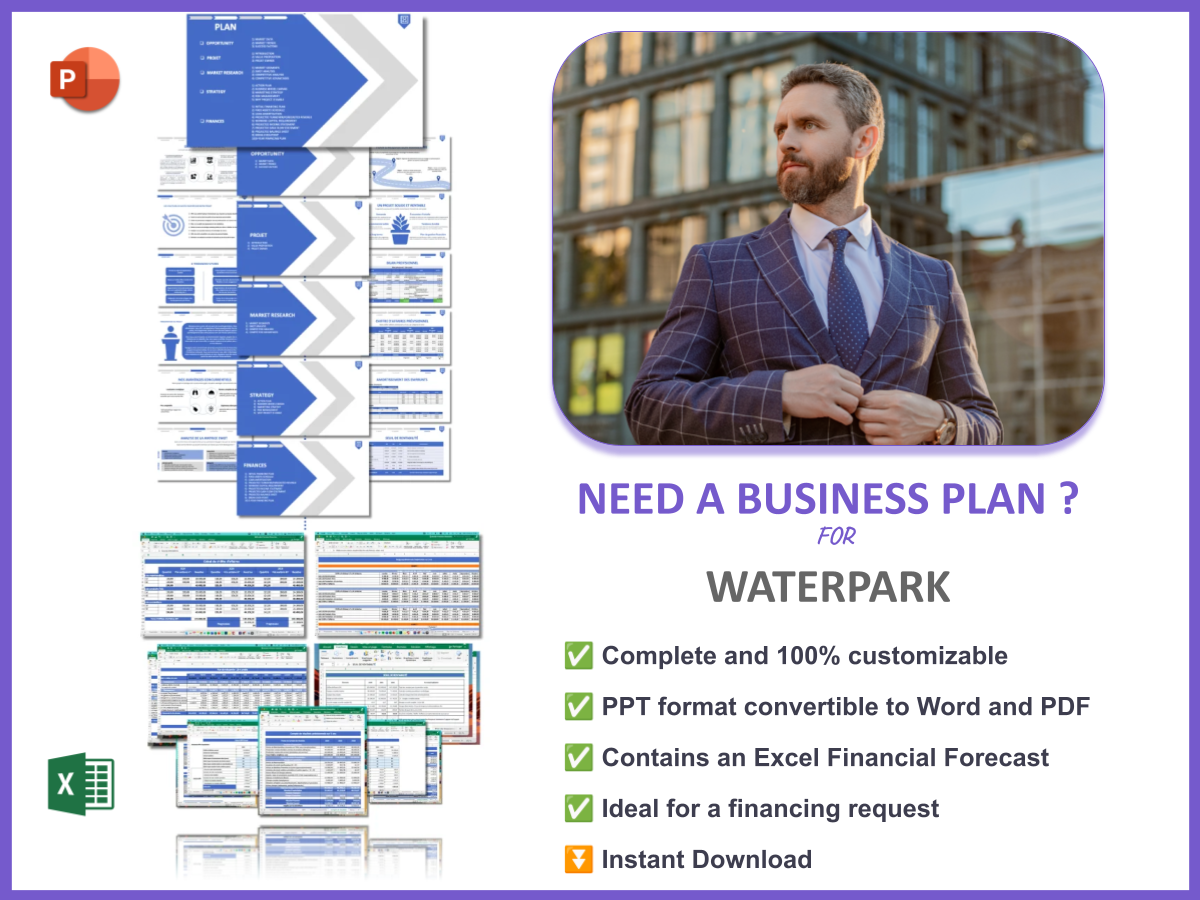Are you thinking about starting a waterpark? You’re not alone! In fact, the global waterpark industry is projected to grow by over 10% in the coming years. Crafting a solid Waterpark Marketing Plan is essential for standing out in this competitive market. A Waterpark Marketing Plan is a strategic framework that outlines how you will promote your waterpark to attract visitors and maximize revenue. In this article, we will explore the key components of a successful marketing plan tailored specifically for waterparks.
1. Define Your Target Market
| Target Market Segment | Demographics | Interests |
|---|---|---|
| Families | Parents with children aged 5-12 | Outdoor activities, adventure |
| Young Adults | 18-30 age group | Socializing, thrill-seeking |
Identifying your target market is crucial. This involves recognizing the different groups that are likely to visit your waterpark and tailoring your marketing efforts accordingly. By understanding who your customers are, you can create marketing messages that resonate with them.
For instance, if your primary audience is families, you might focus on safety, fun activities for children, and family-friendly pricing. On the other hand, if you’re targeting young adults, your messaging could highlight thrilling rides, social events, and nightlife options at the park.
2. Understand Your Ideal Customers
| Customer Type | Characteristics | Preferred Marketing Channels |
|---|---|---|
| Families | Value safety and fun | Social media, family blogs |
| Young Adults | Seek thrill and excitement | Instagram, influencers |
Understanding your ideal customers helps in tailoring your messaging. Create customer personas to represent these ideal visitors. For example, a family persona might include parents aged 30-40 with children who enjoy outdoor activities. Meanwhile, a young adult persona could focus on individuals who are social media savvy and love to share their experiences online.
By knowing your customers inside and out, you can craft marketing campaigns that speak directly to their needs and desires. This not only boosts engagement but also increases the likelihood of converting potential visitors into actual guests.
3. Analyze Your Competitors
| Competitor | Strengths | Weaknesses |
|---|---|---|
| WaterWorld | Established brand with loyal customers | High ticket prices may deter some visitors |
| Splash City | Great location with easy access | Limited attractions compared to larger parks |
Competitor analysis can give you insights into what works and what doesn’t in your market. By examining your competitors, you can identify their strengths and weaknesses, allowing you to position your waterpark more effectively.
For instance, if you notice that a competitor has a strong social media presence, you might want to enhance your own efforts in that area. Conversely, if they have high ticket prices, you could consider offering competitive pricing or special promotions to attract budget-conscious families.
Incorporating competitor analysis into your Waterpark Marketing Plan is not just about imitation; it’s about learning and innovating. By understanding your competitors, you can carve out your unique space in the market and offer something that sets you apart.
4. Establish Clear Marketing Objectives for Your Waterpark
| Objective | Measure of Success |
|---|---|
| Increase Visitor Numbers | Achieve a 10% growth in ticket sales |
| Boost Brand Awareness | Increase social media followers by 20% |
Setting clear and measurable objectives helps guide your marketing efforts. When you define what success looks like, you can better tailor your strategies to meet those goals. For example, if your objective is to increase visitor numbers, you might focus on targeted advertising campaigns, promotional events, or partnerships with local businesses.
Additionally, consider implementing a system for tracking progress toward these objectives. This could involve regular reviews of sales data, website traffic, and social media engagement. By continuously monitoring your performance, you can make informed adjustments to your Waterpark Marketing Plan to ensure that you stay on track to meet your goals.
Remember, your objectives should be SMART: Specific, Measurable, Achievable, Relevant, and Time-bound. This framework ensures that your marketing efforts are focused and effective.
5. Choose Effective Marketing Strategies for Your Waterpark
| Strategy | Description |
|---|---|
| Social Media Marketing | Engage with visitors on platforms like Instagram and Facebook |
| Email Campaigns | Send newsletters with promotions and updates |
Choosing the right marketing strategies ensures that you reach your target audience effectively. For instance, utilizing social media marketing can significantly boost your visibility and engagement. By sharing vibrant images and videos of your attractions, you can draw attention and entice potential visitors.
Consider creating a content calendar for your social media posts to maintain a consistent presence. This could include promotional posts, behind-the-scenes content, and user-generated content featuring guests enjoying your waterpark. Engaging with your audience through comments and messages can also foster a sense of community.
Additionally, email campaigns are a powerful tool for keeping your audience informed about upcoming events, special promotions, and new attractions. Make sure to segment your email list to tailor your messages to different customer groups, enhancing the relevance and effectiveness of your communications.
6. Evaluate and Adjust Your Waterpark Marketing Plan
| Evaluation Method | Frequency |
|---|---|
| Customer Feedback | Quarterly |
| Sales Data Analysis | Monthly |
Regular evaluation helps you adapt your strategies based on real-time data. It’s important to have a system in place for gathering customer feedback to understand what your visitors appreciate and where improvements can be made. This can be done through surveys, comment cards, or online reviews.
In addition to customer feedback, analyzing sales data monthly can provide insights into which marketing efforts are driving ticket sales. Are certain promotions yielding better results? Are there trends in visitor numbers that correlate with specific marketing activities? By asking these questions, you can refine your approach to maximize your marketing effectiveness.
Lastly, don’t be afraid to pivot your strategies based on what the data tells you. The ability to adapt is crucial in the ever-evolving entertainment landscape, ensuring your Waterpark Marketing Plan remains relevant and effective.
7. Example N°1 of Marketing Plan for a Waterpark
| Steps | Actions | Details |
|---|---|---|
| 1 | Target Market | Focus on families and young adults |
| 2 | Ideal Customers | Create personas based on demographics |
| 3 | Competitors | Analyze local waterparks |
| 4 | Marketing Objectives | 10% increase in visitors |
| 5 | Marketing Strategies | Social media and email campaigns |
| 6 | Evaluation | Quarterly surveys and sales data |
This example outlines a comprehensive Waterpark Marketing Plan that targets families and young adults. By creating customer personas, the park can tailor its marketing messages to resonate with these groups. The marketing objectives aim for a 10% increase in visitors, and strategies include leveraging social media and email campaigns to engage potential guests.
Regular evaluations through surveys and sales data will help track progress and make necessary adjustments to ensure the plan remains effective. This structured approach not only clarifies the goals but also provides a roadmap for achieving them.
8. Example N°2 of Marketing Plan for a Waterpark
| Steps | Actions | Details |
|---|---|---|
| 1 | Target Market | Focus on tourists and local families |
| 2 | Ideal Customers | Target young families and thrill-seekers |
| 3 | Competitors | Review nearby attractions |
| 4 | Marketing Objectives | Increase social media engagement by 30% |
| 5 | Marketing Strategies | Influencer partnerships and local ads |
| 6 | Evaluation | Monthly performance reviews |
This second example emphasizes the importance of targeting both tourists and local families. By aiming to increase social media engagement by 30%, the waterpark can build a stronger online presence. Strategies such as influencer partnerships and local advertisements will help attract visitors and create buzz around the park.
Regular performance reviews will ensure that the marketing efforts are effective and allow for quick adjustments. This proactive approach to evaluating the Waterpark Marketing Plan can lead to sustained growth and success in attracting a diverse audience.
9. Example N°3 of Marketing Plan for a Waterpark
| Steps | Actions | Details |
|---|---|---|
| 1 | Target Market | Focus on corporate events and family outings |
| 2 | Ideal Customers | Corporate clients and family groups |
| 3 | Competitors | Identify strengths and weaknesses |
| 4 | Marketing Objectives | Boost group bookings by 15% |
| 5 | Marketing Strategies | Corporate packages and discounts |
| 6 | Evaluation | Track group sales monthly |
This example highlights a marketing plan focused on attracting corporate events and family outings. By identifying these specific ideal customers, the waterpark can tailor its offerings to meet the needs of group bookings. The marketing objective to boost group bookings by 15% can be achieved through specially designed packages and discounts.
Incorporating corporate packages can not only increase revenue but also introduce the park to new visitors who may return with their families. Tracking group sales monthly will provide insights into the effectiveness of these strategies, allowing for timely adjustments to the Waterpark Marketing Plan.
10. Example N°4 of Marketing Plan for a Waterpark
| Steps | Actions | Details |
|---|---|---|
| 1 | Target Market | Engage with school groups and day camps |
| 2 | Ideal Customers | Educators and camp leaders |
| 3 | Competitors | Analyze group offerings from competitors |
| 4 | Marketing Objectives | Increase school group visits by 20% |
| 5 | Marketing Strategies | School outreach and educational packages |
| 6 | Evaluation | Survey teachers after visits |
This fourth example focuses on engaging with school groups and day camps, which can provide a steady stream of visitors during peak seasons. By targeting educators and camp leaders, the waterpark can create tailored marketing messages that resonate with this audience. The goal to increase school group visits by 20% can be achieved through outreach efforts and educational packages designed for students.
Additionally, surveying teachers after their visits can provide valuable feedback and help refine the offerings. By consistently evaluating the success of these strategies, the waterpark can ensure its Waterpark Marketing Plan is effectively attracting school groups, leading to increased attendance and repeat visits.
11. Example N°5 of Marketing Plan for a Waterpark
| Steps | Actions | Details |
|---|---|---|
| 1 | Target Market | Attract thrill-seekers and adventure lovers |
| 2 | Ideal Customers | Young adults and teens |
| 3 | Competitors | Benchmark against high-adventure parks |
| 4 | Marketing Objectives | Increase thrill ride promotions by 25% |
| 5 | Marketing Strategies | Social media challenges and contests |
| 6 | Evaluation | Monitor social media engagement |
This fifth example showcases a marketing plan focused on attracting thrill-seekers and adventure lovers. By targeting young adults and teens, the waterpark can leverage high-adrenaline attractions to create excitement. The objective to increase thrill ride promotions by 25% can be achieved through engaging social media challenges and contests that encourage visitors to share their experiences.
These strategies not only enhance visibility but also create a buzz around the park, making it a must-visit destination for adventure enthusiasts. Monitoring social media engagement will provide insights into the effectiveness of these campaigns, allowing for adjustments as needed in the Waterpark Marketing Plan.
12. Example N°6 of Marketing Plan for a Waterpark
| Steps | Actions | Details |
|---|---|---|
| 1 | Target Market | Focus on local residents |
| 2 | Ideal Customers | Families with children |
| 3 | Competitors | Review local family attractions |
| 4 | Marketing Objectives | Increase local ticket sales by 15% |
| 5 | Marketing Strategies | Local partnerships and promotions |
| 6 | Evaluation | Analyze local sales data |
This sixth example emphasizes the importance of targeting local residents. By focusing on families with children, the waterpark can create tailored marketing messages that highlight family-friendly attractions. The objective to increase local ticket sales by 15% can be achieved through partnerships with local businesses and promotions that encourage residents to visit.
Engaging with the community through local events can also enhance brand loyalty and attract more visitors. Analyzing local sales data will help track the success of these strategies and ensure the Waterpark Marketing Plan remains relevant and effective.
13. Example N°7 of Marketing Plan for a Waterpark
| Steps | Actions | Details |
|---|---|---|
| 1 | Target Market | Focus on tourists visiting the area |
| 2 | Ideal Customers | Families and adventure tourists |
| 3 | Competitors | Analyze tourist attractions |
| 4 | Marketing Objectives | Grow tourist visits by 20% |
| 5 | Marketing Strategies | Travel packages and local tourism boards |
| 6 | Evaluation | Monitor tourist feedback |
This final example focuses on attracting tourists visiting the area. By targeting families and adventure tourists, the waterpark can create appealing travel packages that offer discounts for multi-day visits. The objective to grow tourist visits by 20% can be achieved through partnerships with local tourism boards and travel agencies.
Engaging with tourists through feedback surveys will provide insights into their experiences and help refine offerings. By consistently evaluating the success of these strategies, the waterpark can ensure its Waterpark Marketing Plan is effectively attracting tourists, leading to increased attendance and overall satisfaction.
Conclusion
Creating a successful Waterpark Marketing Plan is vital for attracting visitors and maximizing revenue. By understanding your target market, analyzing competitors, setting clear objectives, and choosing effective marketing strategies, you can position your waterpark for success. Regular evaluation and adaptation of your marketing efforts ensure that you stay relevant in a competitive landscape.
For those looking to take their planning a step further, consider utilizing a professional business plan template specifically designed for waterparks. Additionally, check out our articles on How to Create a Waterpark? and How to Create a SWOT Analysis for Waterpark for more insights and guidance on launching and managing your waterpark effectively.
FAQ
- What is a waterpark marketing plan?
A waterpark marketing plan is a strategic document that outlines how to promote a waterpark to attract visitors and increase revenue. - How do I identify my target market for a waterpark?
Identify your target market by analyzing demographics, interests, and behaviors of potential visitors. Consider families, young adults, and tourists. - What marketing strategies work best for waterparks?
Effective strategies include social media marketing, email campaigns, partnerships with local businesses, and special promotions to attract visitors. - How can I analyze my competitors?
Research local waterparks and attractions to identify their strengths and weaknesses. Look at their marketing strategies, pricing, and customer feedback. - What are some common marketing objectives for waterparks?
Common objectives include increasing visitor numbers, boosting brand awareness, and enhancing customer engagement. - How often should I evaluate my marketing plan?
Regular evaluations are crucial; consider conducting monthly reviews of sales data and quarterly assessments of customer feedback. - What are the key components of a waterpark marketing plan?
Key components include defining your target market, understanding ideal customers, analyzing competitors, setting objectives, and choosing marketing strategies. - How can I increase social media engagement for my waterpark?
Engage your audience by sharing exciting content, running contests, and responding to comments. Collaborating with influencers can also boost visibility. - What types of promotions attract visitors to waterparks?
Discounts for families, group packages, seasonal promotions, and loyalty programs can effectively attract visitors to your waterpark. - How do I create a successful waterpark brand?
Build a strong brand by defining your unique selling proposition, maintaining consistent messaging, and delivering exceptional customer experiences.


